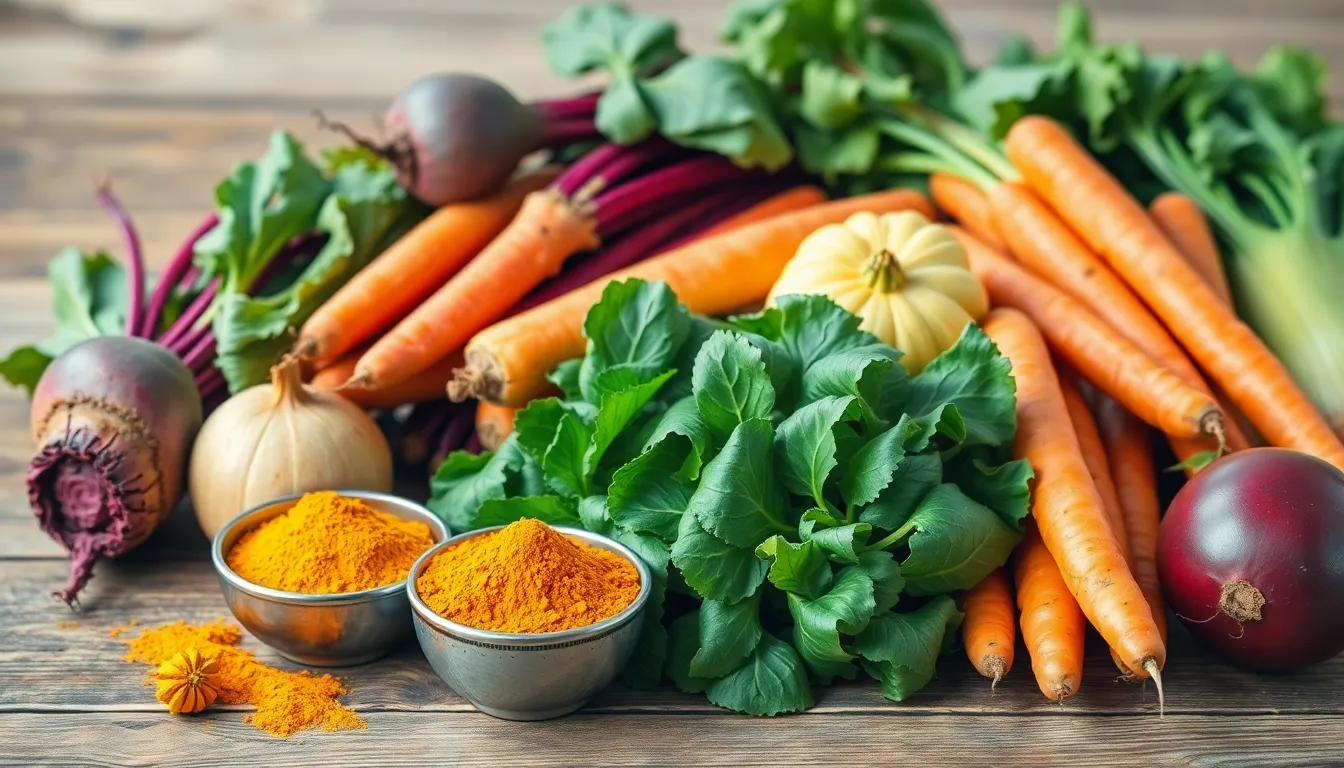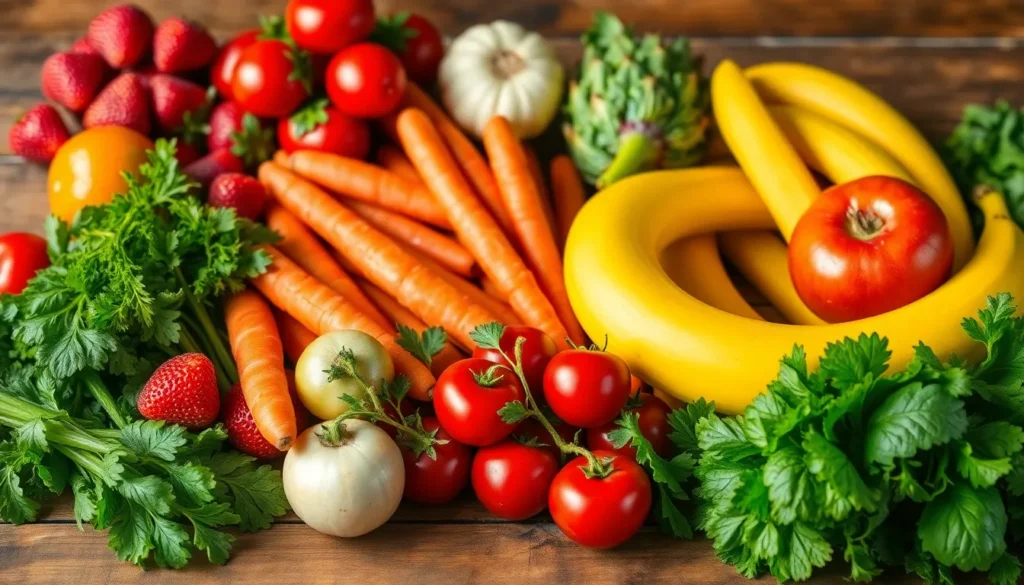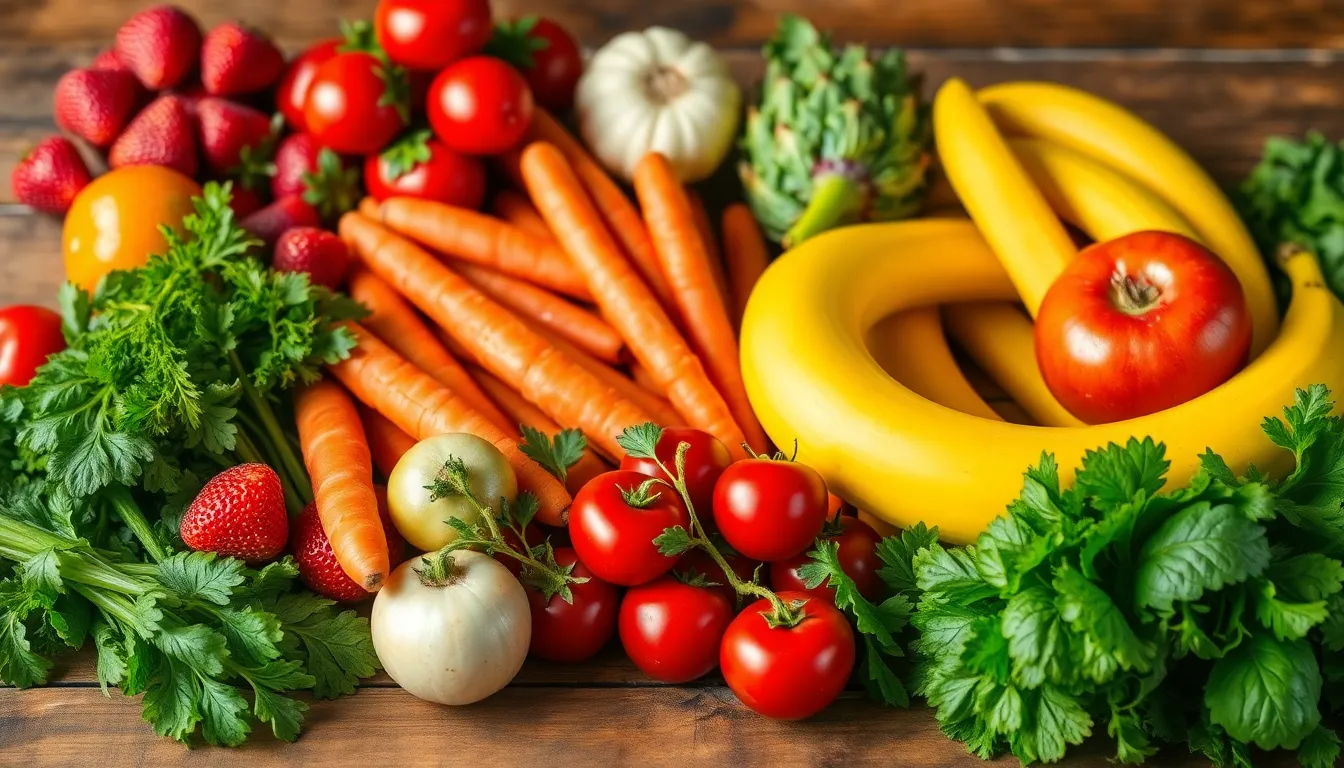Bright, vibrant colors in food can do more than just catch the eye; they can elevate a meal from ordinary to extraordinary. Ever wondered why a plate of rainbow veggies looks more appetizing than a dull beige casserole? It’s not just about aesthetics—color plays a crucial role in our perception of taste and freshness.
In the world of culinary delights, color isn’t just for show; it’s a powerful tool that chefs and home cooks alike can wield to create enticing dishes. From the rich reds of tomatoes to the deep greens of spinach, each hue tells a story about flavor and nutrition. So, buckle up as we dive into the colorful world of food and discover how these vibrant shades can transform your dining experience. Who knew eating could be this much fun?
Table of Contents
ToggleImportance of Colour in Food
Color plays a crucial role in food, enhancing both visual appeal and flavor perception. Vibrant hues not only attract attention but also convey important information regarding nutrition.
Nutritional Perception
Nutrition relies heavily on color cues. Bright colors often indicate high levels of vitamins and antioxidants. For instance, red fruits, such as strawberries and tomatoes, signal the presence of lycopene, linked to heart health. Green vegetables, including spinach and kale, indicate rich sources of iron and vitamins A, C, and K. Consuming a colorful plate may enhance overall dietary quality, leading to healthier eating habits.
Psychological Effects
Color influences people’s emotions and appetites. Warm colors like red and yellow stimulate appetite and create a sense of urgency, making them popular choices in fast-food restaurants. Cooler colors, such as blue and green, tend to have calming effects, potentially leading to slower eating. Research shows that the presentation of food affects satisfaction levels, impacting dining experiences. Using vibrant colors can elevate mood and enhance enjoyment during meals, encouraging exploration of diverse foods.
Types of Colours in Food

Colors in food can be classified into two main types: natural and artificial. Understanding these distinctions helps in making informed choices regarding food consumption.
Natural Colours
Natural colors derive from plants, minerals, and other organic sources. Fruits and vegetables provide a plethora of vibrant pigments; for instance, beet juice gives a deep red hue while spinach offers green tones. These colors often retain health benefits as well, such as carotenoids in carrots promoting eye health. Spices like turmeric not only enhance flavor but add a vibrant yellow color as well. Numerous consumers prefer natural options due to their minimal processing and perceived health advantages. Additionally, these colors can contribute to a diet that includes an array of nutrients essential for overall well-being.
Artificial Colours
Artificial colors, in contrast, are synthetic compounds designed to mimic those found in nature. Widely used in processed foods, these colors can enhance visual appeal and extend shelf life. Some common examples include Red 40, Yellow 5, and Blue 1. These additives often resonate with consumers seeking vibrant, eye-catching products. Regulatory agencies, like the FDA, assess safety before approval, ensuring they are safe for consumption. Concerns remain about potential adverse effects, particularly in sensitive populations, promoting discussions around labeling and consumer choice. These considerations underscore the importance of understanding artificial versus natural color sources in food products.
Applications of Colour in Food
Colour in food plays a crucial role in various applications, enhancing appeal and aiding in communication.
Food Presentation
Food presentation relies heavily on colour to engage diners. Brightly coloured ingredients attract attention, creating visually striking dishes that draw in customers. Chefs often utilize contrasting hues to highlight specific components, making meals more appetizing. Plating techniques aim to balance colours, achieving harmonious aesthetics that enhance the overall dining experience. For example, vibrant greens paired with rich reds can evoke freshness and vitality. Furthermore, incorporating a variety of colours in meals often suggests a wide range of nutrients, promoting healthier choices.
Marketing and Branding
Marketing and branding strategies significantly benefit from colour in food products. Packaging often uses specific colour schemes to convey brand identity and appeal to target demographics. Red and yellow combinations frequently elicit feelings of excitement and hunger, making them popular in fast food marketing. In contrast, green tones signify health and sustainability, attracting consumers seeking organic options. Strategic colour use can influence purchase decisions by conveying a product’s quality and desirability. Additionally, memorable colour branding helps establish loyalty, making it easier for consumers to recognize and choose specific products on store shelves.
The Science Behind Colour in Food
Color in food stems from its chemical composition and can reveal important information regarding freshness and ripeness.
Chemical Composition
Various compounds contribute to the vibrant colors of fruits and vegetables. Chlorophyll imbues green hues, while carotenoids produce yellows, oranges, and reds. Anthocyanins create blue and purple shades, showcasing the diversity found in natural foods. These pigments play roles in plant health, defending against pests and disease. Certain studies suggest that foods rich in colorful pigments often possess higher levels of vitamins and antioxidants, which benefit human health. Nutritional value interrelates with these colors, making it essential to include a variety of colorful foods in diets.
Age and Ripeness Indicators
Color changes frequently indicate the ripeness of fruits and vegetables. For instance, a banana transitions from green to yellow as it ripens, signaling sweetness. Tomatoes shift from green to red, indicating increased levels of sweetness and nutrients. As produce matures, color changes often reflect chemical transformations within the fruit or vegetable. These visual cues help consumers select the freshest options, while also enhancing flavor profiles. Ripeness is essential for both taste and nutrition, as consuming perfectly ripe foods ensures maximum health benefits.
Color plays a vital role in the enjoyment and perception of food. From enhancing visual appeal to conveying nutritional information, the hues present in meals can significantly impact dining experiences. Embracing a variety of colors not only makes dishes more enticing but also encourages healthier eating habits.
Understanding the differences between natural and artificial colors empowers consumers to make informed choices about their food. As the culinary world continues to evolve, the importance of color in food presentation and marketing remains a key factor in attracting and engaging diners. By appreciating the science and psychology behind food colors, individuals can elevate their culinary experiences and promote overall well-being.





